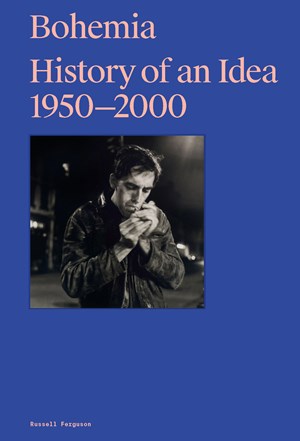
From its origins in mid nineteenth-century Paris, the idea of bohemia has been a powerful component of what it means to be an artist. Bohemia, a real place, has thus given its name to a cultural movement and a way of living. Its values have always centred around a commitment to art in all its forms, an embrace of total freedom, a hostility toward work and conventional ambition, and a willingness to accept poverty.
From its origins in mid nineteenth-century Paris, the idea of bohemia has been a powerful component of what it means to be an artist. Bohemia, a real place, has thus given its name to a cultural movement and a way of living. Its values have always centred around a commitment to art in all its forms, an embrace of total freedom, a hostility toward work and conventional ambition, and a willingness to accept poverty.
“One inescapable characteristic of bohemia is that it is largely a phenomenon formed in reaction to bourgeois society. An established middle class must exist before its values can be rejected. And while artists had often had a reputation for living outside societal norms, it was in mid-nineteenth-century Paris that the bohemian way of life was first codified and romanticized,” explains curator Russell Ferguson. For more than one hundred years, Paris remained the global centre of bohemian life.
This exhibition conveys new insights into the notion of bohemia as it developed from the end of World War II to the end of the twentieth century, across multiple places, including Paris, New York, London, San Francisco, Vancouver, Tehran, Zagreb, Prague, and Beijing. Apart from chronologically examining some of bohemia’s most emblematic scenes, it also looks at both the differences and the continuities that mark various manifestations of the movement, taking visitors on a journey through centres of bohemian life and communities of people who choose to live outside of mainstream values, creating their own artistic subcultures.
The exhibition is curated around thematic ideas of what bohemia has meant over time, with each section representing one decade from the latter half of the twentieth century and a key city that showed a unique aspect of international bohemian culture.
“The lineage of Parisian bohemia, which continued until the 1940s through the Impressionist, Cubist, Dada, and Surrealist movements, is well documented and the subject of numerous exhibitions and publications. Kunsthalle Praha’s newest project looks into bohemian manifestations after World War II, not only in Europe but also across other continents,” adds Christelle Havranek, Chief Curator of Kunsthalle Praha.
Presented as the exhibition’s starting point, the post-war French capital, buzzing with cafés and bars, is portrayed, among other works, by photographs from Ed van der Elsken’s series Love on the Left Bank. Paris’ prominence is eventually usurped by its transoceanic rival, with New York commencing a long reign as the capital of bohemian culture; key works which trace this period in the exhibition include Robert Frank and Alfred Leslie’s short film Pull My Daisy (1959) and portraits by the radical painter Alice Neel.
The exhibition then moves through swinging 1960s London, where bohemians embraced fashion and celebrity, featuring work by Richard Hamilton and Ken Russell. With the rising prominence of the hippie movement, bohemia’s heart then settles in drug-fuelled 1960s San Francisco, with visitors having the opportunity to see William Gedney’s photographs of the Haight-Ashbury district and Bill Owens’ photographs of the Altamont Festival.
The show subsequently travels back to New York again, this time in the 1970s, when many classic bohemian tropes were re-invented in a city then thought to be in terminal decline, embracing its dirt and danger, as illustrated by Nan Goldin’s slide show piece The Ballad of Sexual Dependency (1985) and Neville D’Almeida and Heilio Oiticica’s installation CC5 Hendrix-War / Cosmococa Programa-in-Progress.
After the 1970s, the idea of bohemia no longer seemed to need a capital city, and we can see it emerge in various forms adopted in Tehran (with Bijan Saffari’s elegant pencil sketches), Vancouver (with Roy Arden’s photographs), Zagreb (with the performative actions and photos of Tomislav Gotovac), and Prague. Czech bohemia is expressed through the photographs of Libuše Jarcovjáková, a pioneer in documenting the ostracized LGBT scene of communist Czechoslovakia during the 1980s. Reaching turn-of-the-century melancholy, the exhibition concludes with works from Mexico City, by Gabriel Orozco, and from London, by Wolfgang Tillmans, which nevertheless still evoke the hedonism and bars of mid-century Paris, where it all began.

ArtDependence Magazine is an international magazine covering all spheres of contemporary art, as well as modern and classical art.
ArtDependence features the latest art news, highlighting interviews with today’s most influential artists, galleries, curators, collectors, fair directors and individuals at the axis of the arts.
The magazine also covers series of articles and reviews on critical art events, new publications and other foremost happenings in the art world.
If you would like to submit events or editorial content to ArtDependence Magazine, please feel free to reach the magazine via the contact page.